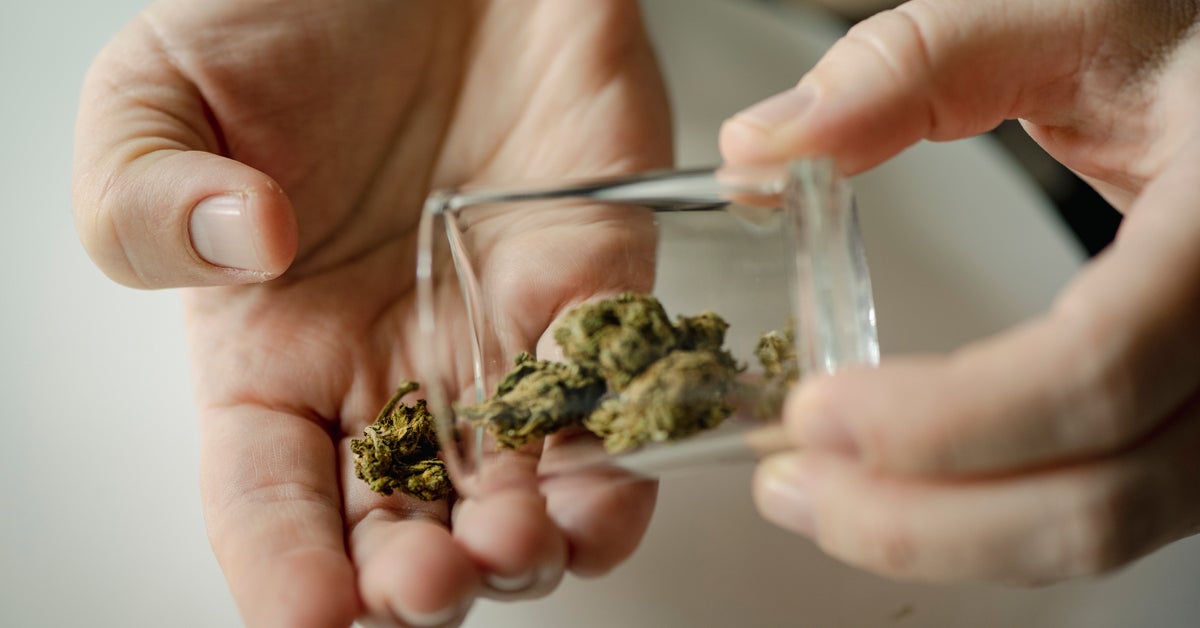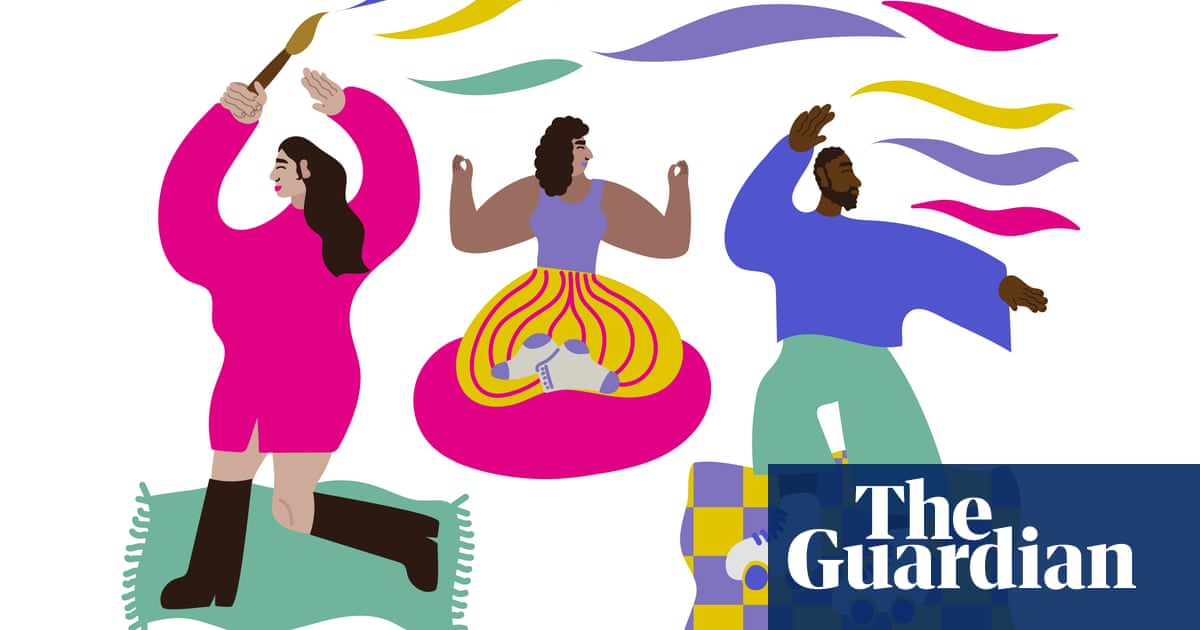At every social gathering of middle-aged people I’ve been to recently, almost everyone has an “I tried a THC gummy bear because I couldn’t sleep and found myself in the emergency room or about to call 911” episode to share.
The weed from when my friends and I were younger pales in potency to the variants available today. And taking a hit, a slice or a pill can feel like dropping acid during the ’70s did. (At least from my limited experience, this seems to be a fair assessment.)
A friend told me that she ate a gummy on vacation to relax and avoid getting seasick on a boat. But instead her teeth felt thick, she couldn’t keep up with the conversation around her, and she thought she was having a stroke.
“I had a two-minute delayed response to everything, so I just went to bed and slept for 10 hours,” she said.
One man I met told me he was having dinner at a country club with friends during Dry January. When he declined a drink, his waiter insisted that he try the club’s new seltzer, an artisan extract with the tag line “THC for the people” and the quote “Caution is the path to mediocrity” by author Frank Herbert on its website. He was unaware of how high he was — or that he shouldn’t be operating a motor vehicle — until, on the way home, his wife turned to him when he stopped at a green light and asked what he was doing.
“I have no idea,” he said.
More middle-aged people are using marijuana than in previous years. Meanwhile, poison control centers are receiving more calls and states are seeing increasing numbers of ER visits due to people passing out, hallucinating or experiencing other issues as cannabis (legal or not) becomes more readily available in many parts of the U.S.
I had my own misadventure with the drug seven years ago, before it was legalized for recreational use in California, where I was visiting from Alabama for breast cancer treatment. My husband and I went looking for pot, but this hunt wasn’t like the ones I went on as a teenager. I needed cannabis to ease any post-chemo nausea I might experience and to help blunt my anxiety the night before I’d be hooked up to the “red devil” for the first time.
Another patient had told us about a medical dispensary in Santa Ana. At the large, slick metal building tucked indiscreetly behind a shiny shopping center, I signed up for a membership with the dispensary’s club under the name “Lanier Insomnia” so a remote doctor would “prescribe” something for me. However, I quickly learned that it was illegal to dispense to anyone who was not a resident of the state.
That’s how my husband and I found ourselves in late-afternoon traffic on the six-lane highway headed to a “church” of “cannabis ministries” in a low-slung building next to a motel and a tattoo parlor. There were several doors in the strip center with darkened windows but not one sign.
It was getting dark, and as we stood on the sidewalk trying to figure out where the church was, a man appeared from a black SUV, asked us if we needed help, and took us to the right door.
Inside a small waiting room with a receptionist behind a glass panel, I filled out a membership form for my new church, where I became a believer in cannabis and pot was a sacrament, and I waited while a TV played a program about waltzing black holes. Once I was buzzed into the next room, a young man behind a glass counter full of pipes and paraphernalia convinced me that all cancer patients needed “Ricky Simpson oil,” or RSO.
I now know that Rick Simpson was a skin cancer patient who read about a study in which THC killed cancer cells in mice, so he came up with a process of extracting as many cannabinoids from the cannabis plant as possible, making a substance that was high in THC and extremely potent. The guy with glazed eyes neglected to tell me that the beginning dose should be no larger than half of a grain of rice.
That night at the hotel with red curtains and scratchy carpet where we had been staying for several weeks, a weather map of California on the TV blazed wildfire red. My husband gallantly offered to do a test drive of the oil for me, which meant dabbing it on a joint. After a while, when he didn’t feel anything, he added more RSO, and at that point I insisted it was my turn.
The next thing I knew, I’d become a thousand raw nerve endings. Everything took on a cartoonish feel. The only thing to do was to try to sleep, but the walls were breathing. I did doze off but woke up to my husband pacing the floor and yelling into the phone, “Hey, Siri, can you overdose on Ricky Simpson oil?”
Siri didn’t respond, and I cannot tell you how many times he yelled at Siri while I kept thinking there were men with guns in the parking lot about to invade our room.
The following day, we were both jagged. I was in the worst possible state to deal with chemo, but things were going OK until I accidentally ate someone else’s lunch from the refrigerator at the cancer center. When the hungry woman demanded to know why I ate her lunch, I could only sputter some nonsense and thank Ricky for my predicament. Later, when I started crying, all I could say to the bewildered nurse was: “I’m from the South. People cry there.”
When I told the doctor what happened, she asked: “Why didn’t you say something? I could have prescribed you something less potent.”
Studies have shown that cannabis can ease stress, nausea and pain; decrease inflammation; and help with certain health conditions like epilepsy. But if you’re going to partake — for medical reasons or just a good time — you should know that things are different from the Cheech and Chong days, when it took an entire joint to get high.
Now, you don’t even need RSO to be launched into orbit. With just a few hits or a tiny piece of cannabis candy, you can become fully baked because, over the past 50 years, the average amount of THC in cannabis products has increased — sometimes as much as tenfold. Back in the day, smoking a bowl of brown sticks and stems was like eating Kraft cheese, while what’s sold today is more like fancy feta cheese. It’s great to get more bang for your buck, but you want to make sure you’re aware of just how much bang you’re getting.
So, if you’re looking to buy some edibles, smoke some weed or drink some cannabis-infused tea from one of the thousands of dispensaries across the country, know your state laws. And when you travel to another state, get up to speed on its laws too. Make sure that the product you buy has a certificate of analysis to ensure quality control and low toxicity. Consider buying from a Black-owned business. (Despite the disproportionate number of weed-related arrests that Black individuals have historically faced, in 2021 under 2% of cannabis businesses were owned by Black entrepreneurs — all the more reason to support them.) Then, do some research to understand potency levels, learn the difference between the types of products, check for other ingredients and additives, and go slow.
One of the great things about buying cannabis today is that there’s more variety, and most products list how many grams of THC you’ll be consuming per serving. That means you can slice that gummy in half, just have a few puffs, or devise whatever way feels right to customize your high. Lastly, it’s not a bad idea to talk to your doctor before using cannabis, especially if you’re taking medications that could interact with the drug.
Since my disastrous experience in that hotel, I’ve tried weed gummy bears a couple of times for anxiety, but I didn’t like how disoriented I felt. During the teenage wasteland of the ’70s and ’80s, I loved that fun-house feeling and the ritual of smoking pot with my friends. Weed was everywhere, and my brother making hashish from a gadget he ordered from the back of High Times with the pot he grew in a friend’s basement, or our suburban backyard, wasn’t unusual.
I now realize that when I smoked in my 20s, I was simply trying to take the edge off my stress. By the time I became a mother, I felt I couldn’t find real relief at the bottom of a bong — it just didn’t do anything positive for me anymore — and I found other ways to cope. Still, for many people, especially those my age, it’s a positive thing. Live and let live, right? But if you’re going to do it, make sure you’re as prepared as possible, and maybe skip the Ricky Simpson oil.
Lanier Isom is a journalist and co-author of the award-winning memoir “Grace and Grit: My Fight for Equal Pay and Fairness at Goodyear and Beyond.” The film “Lilly,” based on her book and starring Patricia Clarkson, is in postproduction. Her work has appeared in Al Jazeera, The Los Angeles Times, The Lily, The Bitter Southerner, Scalawag and Salvation South. A frequent contributor to AL.com, she is an Alabama Library Association Nonfiction Award recipient and a 2023 Alabama State Council on the Arts fellow. She has completed a memoir about growing up in the South during the ’70s before #MeToo and is currently working on a project about environmental racism in a small Alabama town. A blue dot in a red state, she lives in Birmingham, Alabama, with her husband and three dogs, and has a college-aged daughter and grown son. She’s a Peloton addict, dog lover and psychic junkie. For more from Lanier, visit lanierisom.com and her Instagram page, @lanierisom.
Do you have a compelling personal story you’d like to see published on HuffPost? Find out what we’re looking for here and send us a pitch at [email protected].






